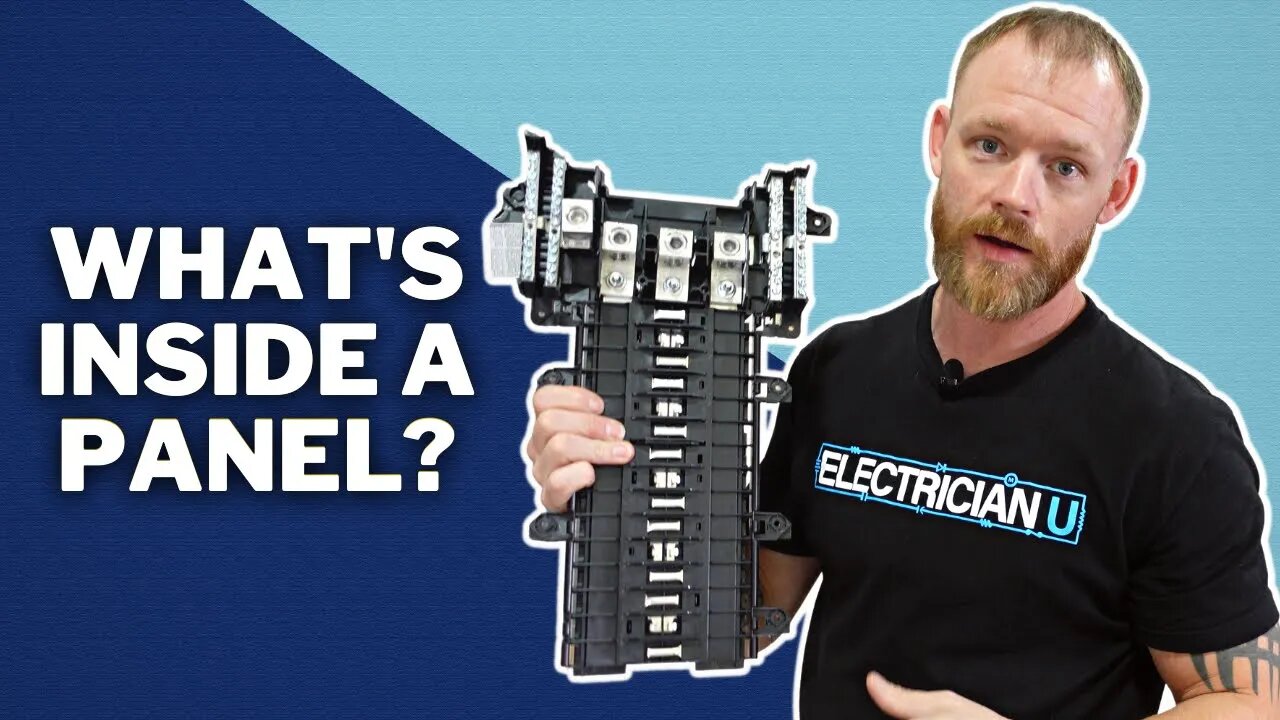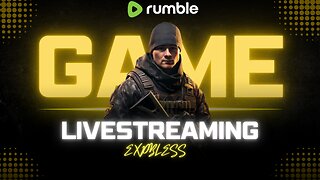Premium Only Content

How Do Electrical Panels Work - An Explanation of All the Parts!
As electricians, we know that panels are where we source our power for devices, fixtures, and equipment. But how do they really work? In the latest episode of Electrician U, Dustin explores this topic in the hopes of helping us understand.
🤘⚡️MEMBERSHIP⚡️🤘
JOIN ELECTRICIAN U - become a member and get:
FREE Continuing Education every year
FREE Practice Exams
FREE Monthly Video Courses
FREE Weekly Live Instructor-Led Classes
FREE Monthly Educational Newsletter
Premium Members-Only Content
Private Discord Channel
Monthly Members-Only Discord Chats
Sign up here --- https://www.electricianu.com/electrician-u-membership/
🎧🎹MUSIC AND VIDEO:🎹🎧
https://www.facebook.com/descantmv
🎬✍️ART AND ILLUSTRATION:✍️🎬
https://www.daverussoart.com
To start, lets explain the basic components that are in electrical panels. We have incoming lugs. This is where you would land the wires from the SOURCE feeding the panel itself. You will have one for each phase (or hot) conductor, one for the neutral, and one for the ground. Next, we will have the panel interior itself. This contains the buss for each of the phases and is where the load side breakers will attach. It also contains a few pieces of insulating material that keep the phase busses isolated from the metal current carrying pieces within the panel that it shouldn’t touch. Finally, we have a main breaker. This allows us to shut the entire panel off with one throw of a single switch. It also provided overcurrent protection for the panelboard as a whole. There are instances where a MCB (main circuit breaker) are not needed, in which case you will only have the MLO (main lug only) that we discussed above. As a side note, main breaker kits are available for some panels, so you have the provisions to add that main breaker if desired or necessary.
The buss bars within the panel alternate and are usually the point that many starting out electricians have confusion. Breakers in panels are generally lined up in two rows. Odd numbered circuits on the left and even numbered circuits on the right. So, the top slot usually contains circuit numbers 1 & 2. These are on the A phase (or the black incoming wire). The next slot contains circuit numbers 3 & 4. These are on the B phase (or the red incoming wire. This pattern repeats itself all the way down thru the entire panel. A, B, A, B, A, B……... This changes a little when we introduce a 3-phase panel in that the sequence goes A, B, C, A, B, C…... So, breakers across from each other are on the same phase, but the breakers provide a different circuit for each.
What is important to know here is that via the breaker, the outgoing wire, your load, and the returning neutral form a complete circuit (loop) allowing current to flow. The current leaves the breaker, travels thru the load (or loads) and comes back to the panel on the neutral (or other hot if you are using a 2 or 3-pole breaker. In the panel itself, the neutral wire is attached to the neutral buss, which is attached to the neutral wire back to the transformer. The phase that you are using is also attached to the incoming phase wire from the transformer. The loop is now complete, and current is allowed to flow.
The individual breakers in the panel provide protection for the conductors and the load that they are serving. They also allow us additional control of those loads by affording us the opportunity to shut them off if needed. These breakers can come in several different ampacity ratings and a few different protection types (AFCI and GFCI being among them). Breakers can also be single pole (serving one single circuit), 2 pole (serving 2 hots) or three phase (serving equipment that utilize 3 phase power like motors, other panels, transformers, etc.).
We hope this has been helpful in understanding the different components of a panel and how those components work together to form loops and let current flow. Is there a topic you would like to see a video made on? Leave a comment in the comments section and let us know. Please continue to follow Dustin and Electrician U as we are constantly updating our content to assist our followers in becoming the best electricians they can be.
-
 0:57
0:57
Electrician U
1 year agoMy FAVORITE Tester for Electricians - What Hand Tools Are YOU Missing
5.8K -
 13:46
13:46
Nikko Ortiz
17 hours agoYour Humor Might Be Broken...
34K4 -
 9:26
9:26
MattMorseTV
1 day ago $41.57 earnedPam Bondi is in HOT WATER.
48K190 -
 16:38
16:38
MetatronGaming
14 hours agoAnno 117 Pax Romana looks INCREDIBLE
76.5K9 -
 3:25:55
3:25:55
DillyDillerson
3 hours agoCAN'T SLEEP | Solo Raids | Trying to level up my workshop | Tips and help are welcome!
4.61K -
 LIVE
LIVE
DynastyXL
3 hours ago🔴 LIVE NOW – ARC RAIDING - BADLY! - NEW RUMBLE WALLET - THOUGHTS?
121 watching -
 2:20:13
2:20:13
Side Scrollers Podcast
21 hours agoVoice Actor VIRTUE SIGNAL at Award Show + Craig’s HORRIBLE Take + More | Side Scrollers
70.6K20 -
 LIVE
LIVE
EXPBLESS
1 hour agoShowcasing New Game | (Where Winds Meet) #RumblePremium
26 watching -
 LIVE
LIVE
Boxin
2 hours agolets BEAT! Kingdom Hearts!
55 watching -
 18:49
18:49
GritsGG
17 hours agoI Was Given a Warzone Sniper Challenge! Here is What Happened!
22.2K2